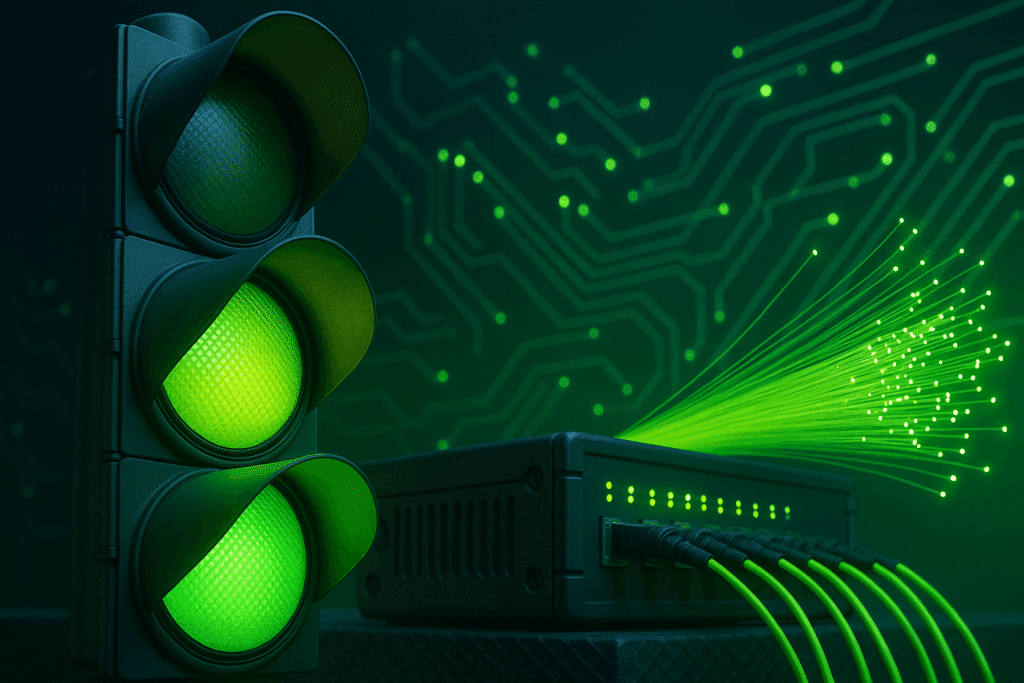
How AI is Revolutionising Network Infrastructure & Security
AI Industry Overview & Market Size in the UK
Artificial Intelligence (AI) is one of the most transformative technologies of our time, impacting various sectors such as healthcare, finance, manufacturing, and cybersecurity. The UK is at the forefront of AI innovation, with a rapidly expanding AI industry that significantly contributes to the country’s economy.
Industry reports indicate that the UK’s AI sector is valued at over £10 billion and employs more than 60,000 professionals across more than 3,000 companies. It is the third-largest AI market globally, following the United States and China. The government’s continuous investments in AI, along with the growing adoption of AI technologies by businesses, suggest that this market is poised for exponential growth in the coming years.
AI Market Size & Future Predictions
The AI industry in the UK is expected to experience a compound annual growth rate (CAGR) of 27.6% between 2025 and 2030. By 2030, the market is projected to reach a valuation of approximately $26.89 billion. Several factors are driving this expansion, including:
– Government Initiatives & Funding: The UK government is investing in AI research and development to maintain a competitive edge in the global AI landscape.
– Increased AI Adoption Across Industries: Businesses are leveraging AI to optimise operations, enhance customer experiences, and improve security measures.
– Advancements in Machine Learning & Automation: The ongoing development of AI-powered tools enables businesses to implement more sophisticated security measures and improve network infrastructure solutions.
As AI becomes an essential component of network operations and security, companies increasingly seek to integrate AI-driven solutions to stay ahead of cyber threats and enhance overall efficiency.
How AI is Used for Networking & Security
AI is transforming network infrastructure by streamlining operations, enhancing security, and reducing the need for manual intervention. Traditional network management relied heavily on manual configuration and monitoring, which was time-consuming and often prone to errors. AI-driven solutions provide predictive analytics, automation, and real-time monitoring, significantly improving network performance and security.
Some key applications of AI in networking and security include:
– Automated Network Management: AI can dynamically adjust network configurations based on real-time data, reducing downtime and enhancing efficiency.
– Predictive Maintenance: AI analyses network traffic patterns and detects anomalies before they lead to major failures.
– Traffic Optimisation: AI-powered solutions optimize network traffic by prioritising critical data and minimising congestion.
– Threat Detection and Response: AI-driven security systems continuously monitor network traffic to detect and mitigate cyber threats in real-time.
The integration of AI into networking and security is enabling businesses to create more resilient and secure digital environments.
How AI is Revolutionising Cybersecurity
Cybersecurity is one of the most critical areas where AI is making a significant impact. With the increasing complexity and frequency of cyberattacks, traditional security measures are no longer sufficient to protect organisations from evolving threats. AI-powered cybersecurity solutions enhance threat detection, improve response times, and increase overall security effectiveness.
Key Ways AI is Revolutionising Cybersecurity:
- Advanced Threat Detection: AI continuously scans large datasets to identify unusual patterns or anomalies that may indicate potential cyber threats.
- Automated Incident Response: AI-powered security systems are capable of responding to threats instantly, significantly reducing the time needed to contain cyberattacks.
- Phishing Detection: AI analyses emails to detect phishing attempts with high accuracy, thereby reducing the risk of social engineering attacks.
- Malware Analysis: AI is effective in detecting and classifying new forms of malware, which helps security teams respond more efficiently.
- Identity & Access Management: AI enhances authentication processes by analysing user behaviour and identifying unauthorised access attempts.
By incorporating AI into cybersecurity, businesses can proactively defend against cyber threats and ensure better protection of sensitive data.
Examples of AI in Security & Network Infrastructure:
AI applications in network security and infrastructure are widespread, with companies employing AI-driven solutions to enhance both efficiency and security. Some notable examples include:
– AI-Powered Firewalls: These firewalls analyse network traffic in real-time, detecting and blocking malicious activities before they can infiltrate the system.
– Intrusion Detection Systems (IDS): AI-powered IDS can identify suspicious network behaviours and alert security teams before an attack occurs.
– AI-Enhanced Cloud Security: AI continuously monitors access patterns to ensure secure cloud environments and prevent unauthorised access.
– Network Anomaly Detection: AI tools can identify irregularities in network traffic that may indicate a cyberattack or system failure.
– Automated Compliance Monitoring: AI assists businesses in adhering to data security regulations by continually monitoring compliance metrics and alerting teams to potential violations.
These AI applications demonstrate how AI is reshaping the security landscape and contributing to more resilient network infrastructures.
Benefits of AI in Network Operations & Security
The adoption of AI in network infrastructure and security offers numerous advantages, including:
- Enhanced Threat Detection: AI-powered security systems analyse vast amounts of data to identify malicious activities, significantly improving threat detection capabilities.
- Faster Incident Response: AI enables security teams to detect and respond to cyber threats in real-time, minimising potential damage.
- Reduced False Positives: Traditional security systems often generate a high volume of false alerts, overwhelming security teams. AI refines threat detection algorithms to reduce false positives and improve accuracy.
- Increased Efficiency and Automation: AI automates repetitive tasks, allowing security teams to focus on critical issues rather than manual monitoring.
- Cost Savings: AI reduces the need for extensive manual monitoring, leading to cost savings in network management and cybersecurity operations.
- Predictive Analytics for Proactive Security: AI’s ability to analyse historical data and predict potential security threats allows businesses to take preventive measures before an attack occurs.
These benefits highlight how AI is enhancing network security, making it more robust and proactive in addressing modern cybersecurity challenges.
Conclusion
AI is playing a crucial role in revolutionising network infrastructure and security. The growing AI market in the UK, alongside advancements in machine learning and automation, is driving significant transformations in how organisations manage their networks and protect against cyber threats.
With AI-powered solutions improving threat detection, automating responses, and optimising network operations, businesses can stay ahead of emerging security challenges. As AI technology continues to evolve, its role in network infrastructure and cybersecurity will become increasingly critical, ensuring safer and more efficient digital environments for organisations worldwide.
The future of AI in network security and infrastructure is promising, and businesses that leverage AI-driven solutions will be better equipped to tackle the evolving cyber threat landscape while maintaining efficient network operations.





















